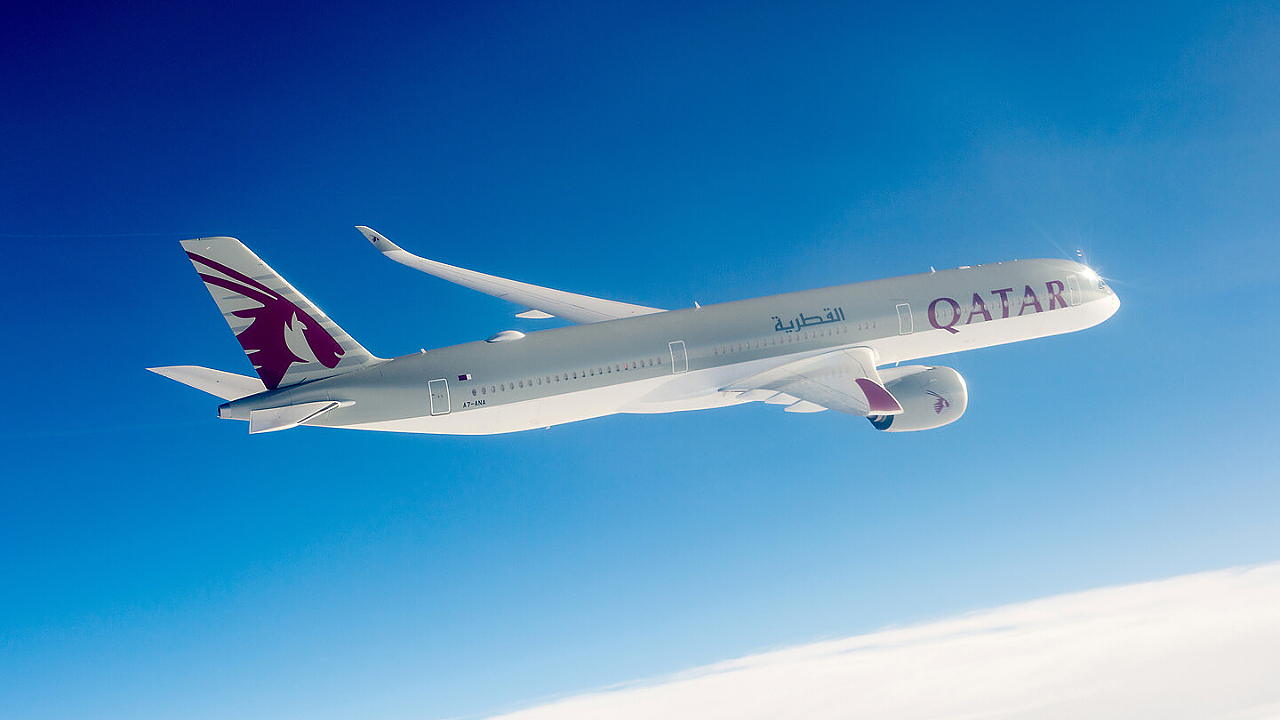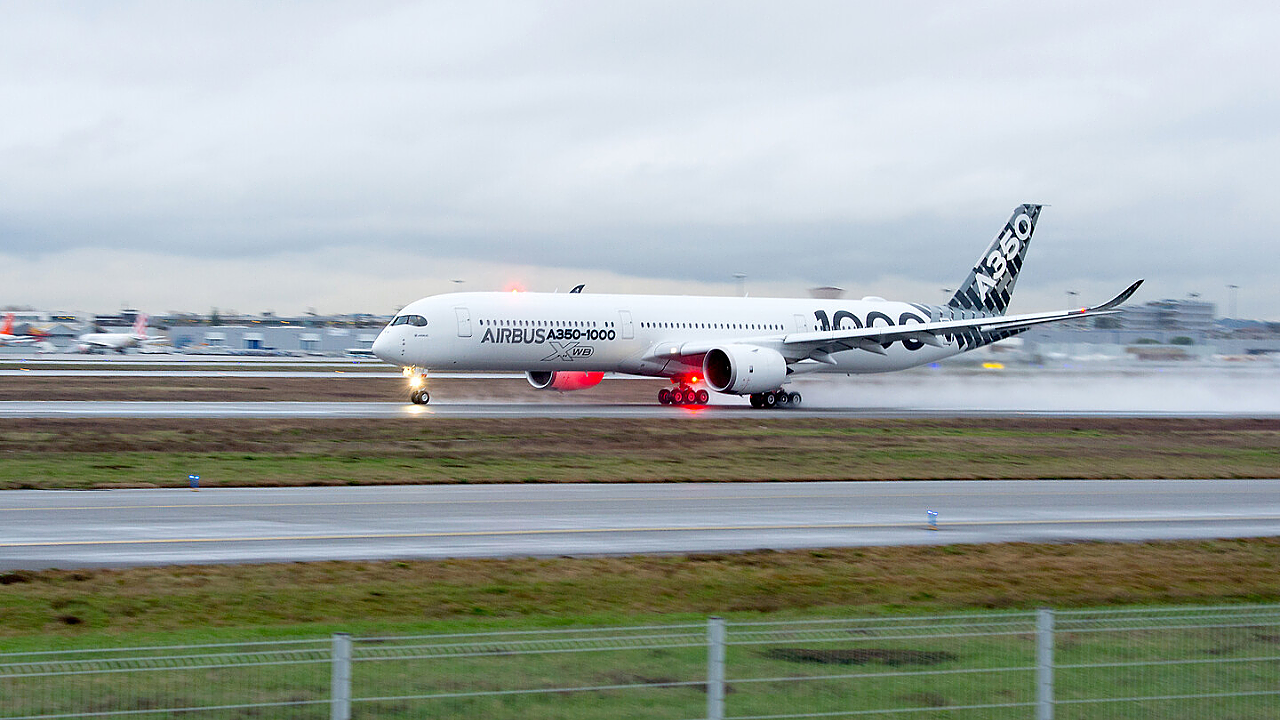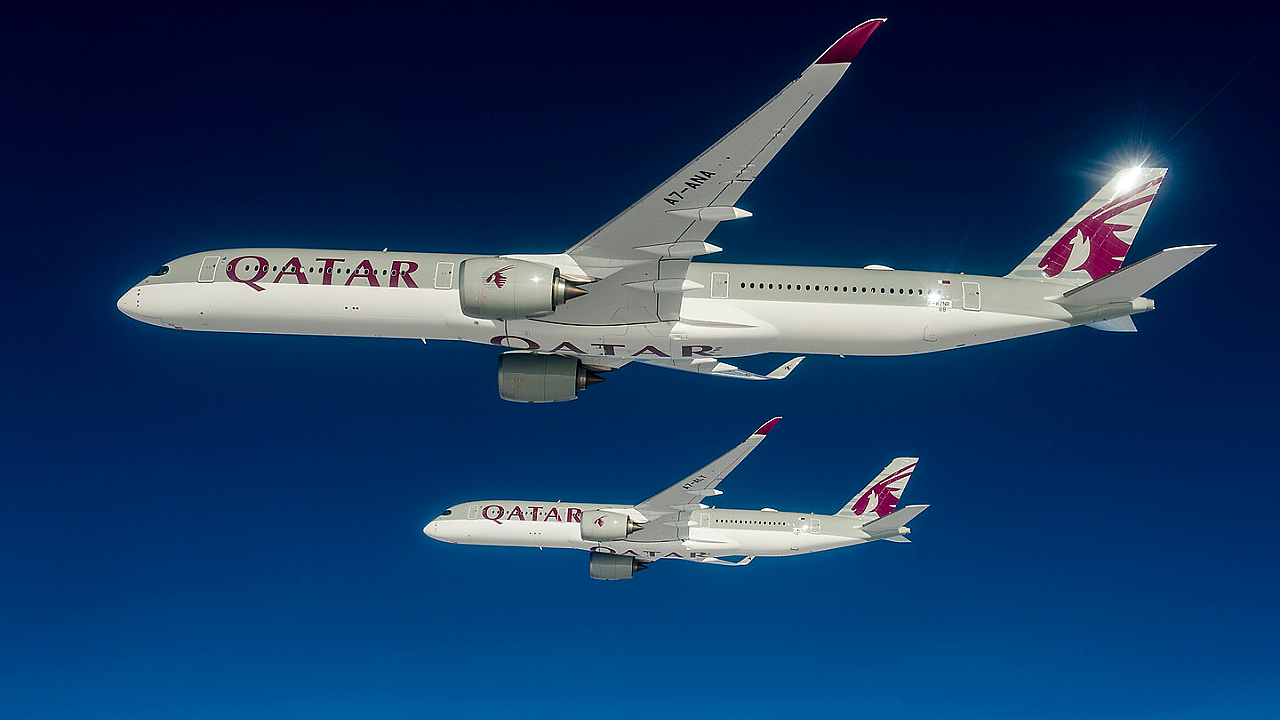
An impending legal confrontation between Qatar Airways and European airframer Airbus in London High Court has been avoided, with both companies reaching an amicable settlement.
The unprecedented legal tussle between the airline and airframer was based on the former’s complaints regarding accelerated surface degradation on its A350 widebody jetliner fleet.
Both companies announced on February 1 that they had reached an amicable and mutually agreeable settlement, which was not an admission of liability for either party and details of the settlement will remain confidential.
Airbus is now undertaking a repair project on the grounded A350s belonging to the airline, following which the aircraft will return to the skies. The settlement also means that Airbus will resume deliveries of aircraft to be delivered to Qatar Airways, and the former can now plan for reintroducing its A350 fleet into service, providing it with the much-needed capacity to meet surging air travel demand.
Qatar Airways is one of Airbus’ most important airline customers; however, the public spat over the last two years resulted in the latter taking the unprecedented step of cancelling its orders for 50 A321neos and 23 A350s with the airline in 2022. Airbus will now work towards delivering these aircraft to Qatar Airways, albeit with a delay.
Qatar Airways was the first airline to introduce the A350-900 and larger A350-1000 into service in January 2015 and February 2018, respectively.
The airline is the world’s largest A350 XWB family customer, with 76 aircraft on order and is the largest A350-1000 customer as well. By January 2021, Qatar Airways’ A350 fleet had grown to 53 aircraft - 34 -900s and 19 -1000s with an average age of 2.7 years.

Legal Tussle
Qatar Airways issued legal proceedings against Airbus in the Technology and Construction division of the London High Court in December 2021. The airline then said it had no alternative but to seek a rapid dispute resolution via the courts. The airline was adamant that Airbus provide a constructive solution to its complaints of the accelerated surface degradation condition, adversely impacting its Airbus A350s. At that time, the carrier had grounded 21 of its A350s. It had also called on Airbus to thoroughly investigate the condition and conclusively establish its full root cause. It insisted that it would not be possible to establish whether any proposed repair solution would rectify the underlying condition.
However, Airbus vigorously defended its position and insisted that the A350s remained safe to fly despite the degradation of surface and paint on certain Qatar Airways A350XWB aircraft. Airbus referred to the condition as a paint condition.
Skin Deep
Qatar announced in 2021 that there was a significant condition across its Airbus A350 fleet in which the fuselage surface below the paint was degrading at an accelerated rate, and by August 2021, it had grounded 13 aircraft. By January 2022, the airline had grounded 21 aircraft and claimed that the defects on its A350s were not superficial.
It said that one of the defects caused the aircraft’s lightning protection system to be exposed and damaged, while another defect left the underlying composite structure exposed to moisture and ultraviolet rays.
The airline also stated that it was experiencing other defects, including cracking in the composite and damage around a high percentage of rivets on the aircraft fuselage.
By February, Qatar’s Civil Aviation Authority (QCAA) had revoked the Airworthiness Review Certificate of an additional A350 aircraft, increasing the number of aircraft grounded to 22 and eventually growing to 29 aircraft by the time of the settlement.
First Operator
Qatar Airways had originally ordered 80 Airbus A350s worth approximately $16 billion at the 2007 Paris Airshow. At the time, it had opted for 20 Airbus A350-800s and 40 A350-900s and became the launch customer for the new A350-100 with orders for 20 aircraft. The A350-1000 is Airbus’ largest widebody in the twin-aisle category and features a 7-metre longer fuselage than the A350-900, allowing Qatar Airways to add 44 more seats.

The A350 was to have gradually replaced its A330s, the backbone of its fleet. At the time of its first A350 order in 2007, the airline was the largest Airbus operator in the Middle East, flying 58 all-Airbus aircraft, including the A319s, A320s, A321s, A330s and A340s. Qatar Airways was a launch customer for the A380 twin-deck ‘superjumbo’.
In an internal benchmark comparing the larger A380 to the A350 on routes from Doha to Guangzhou, Frankfurt, London, Melbourne, New York, Paris, and Sydney, Qatar Airways found that an A350 saved a minimum of 16 tonne of carbon dioxide per block hour, on a typical one-way flight, as compared to the A380. Its analysis found that the A380 emitted over 80% more CO2 per block hour than the A350 on each of these routes. In the cases of Melbourne and New York, Qatar Airways found that the A380 emitted 95% more CO2 per block hour, and the A350 saved around 20 tonne of CO2 per block hour.
Also Read
Airbus Looks To Recruit Engineering, IT Talent At Aero India
Boeing Launches 777-8 Freighter With Qatar Airways